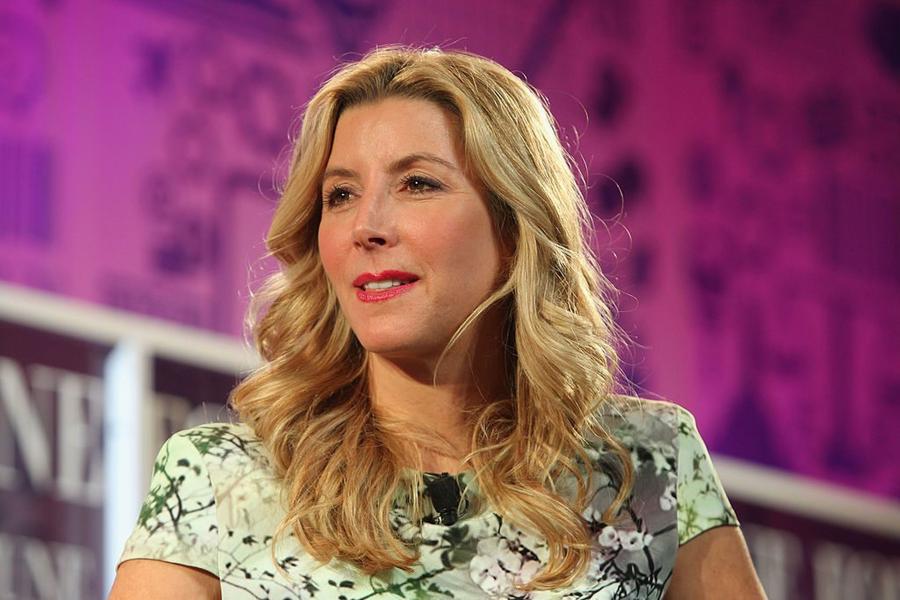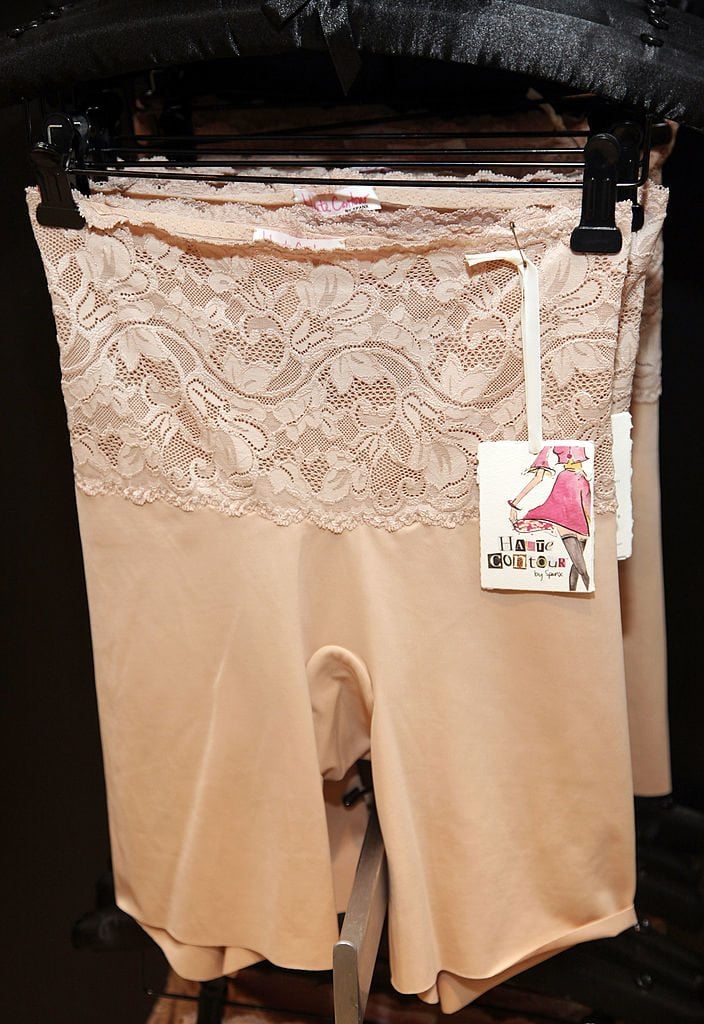Necessity is the mother of invention. Everyone reading this article has experienced a moment when a problem or annoyance sparked a sudden flash of brilliance, an idea for a new product that would surely revolutionize the world and make its inventor a fortune. Here's the problem: Ideas are common. As I just stated a moment ago, everyone reading this article has had a seemingly brilliant idea at some point in their life. The real challenge is turning an idea into an actual business. That requires a combination of capital, connections, manufacturing, distribution, marketing… and a whole lot of luck.
However. There is a hack that can dramatically speed up the transformation from idea to billion-dollar brand. When the idea comes from the brain of one of the richest and most famous people on earth, that helps A LOT.
Take Kim Kardashian. A few years ago, she decided to reshape the shapewear industry. Fast forward to last week, and her company, Skims, was valued at $5 billion, pushing her net worth to $2 billion. But Kim is actually not the first person to become a billionaire thanks to shapewear.
Long before Skims became a global sensation, Sara Blakely had her own shapewear revelation. Sara did not have 350 million Instagram followers, a reality show, or a network of powerful investors. When the idea for Spanx hit her, she was a door-to-door fax machine saleswoman with $5,000 in life savings and a very uncomfortable pair of pantyhose on a brutally hot Florida day.

Sara Blakely – Spanx / Astrid Stawiarz/Getty Images
From Law School to Fax Machines
Kim Kardashian and Sara Blakely actually have a few things in common. Before becoming shapewear billionaires, they both dreamed of becoming lawyers, and both hit major roadblocks trying to make that dream happen.
Kim decided to pursue a legal career after she was already one of the most famous people on the planet. Instead of attending law school, she chose the California apprenticeship route and began preparing for the Bar Exam through direct study. Her first major hurdle was the First-Year Law Students' Examination, better known as the "baby bar." She failed it three times before finally passing and moving on to the actual Bar Exam. And, unfortunately, once again, it was revealed last week that she failed the bar exam on her first attempt. She can try again in six months.
Sara Blakely's path was more traditional. After graduating from Florida State University in the late 1990s, she planned to go to law school. She took the LSAT twice. She failed both attempts. With no law school, no backup plan, and no clear direction, she suddenly found herself unsure what to do next. She had just moved out of her mother's house and needed a job. Like many career-confused Floridians, Sara found herself working at Walt Disney World. She lasted three months.
Jobless and desperate again, Sara took the only other opportunity that came her way: selling fax machines door to door.
Sweltering Heat Gives Birth to an Idea
As you can imagine, selling fax machines door to door was not a glamorous job. Sara had gone from high-flying dreams of a polished legal career to hauling bulky office equipment through endless corporate parks.
Adding insult to injury, her company required her to wear full pantyhose every day. Florida's climate famously alternates between torrential downpours and suffocating humidity, and pantyhose were the absolute worst garment to be trapped in under those conditions. The fabric dug in. The seams showed. The heat made everything cling uncomfortably. Walking office parks in mandatory pantyhose while carrying a demo fax machine from her trunk to yet another lobby was a uniquely miserable experience.
Little could she have known that this uncomfortable grind and the Florida heat that came with it were about to give birth to the billion-dollar idea that would change her life.
The Cream Pants That Changed Everything
The turning point came on a night when Sara wanted to wear a pair of cream-colored pants she had splurged on years earlier. They had been sitting in her closet unworn because every type of underwear created a visible line under the thin fabric. Instead of underwear, a woman might opt for shapewear, which already existed. The problem was that traditional shapers were thick, uncomfortable, and designed in a way that often created new bulges at the thigh instead of smoothing anything out. They were not breathable, not discreet, and not built for modern clothing.
Sara needed something that would smooth without squeezing. Something that would disappear under her cream pants instead of announcing itself. Something that did not actually exist.
Desperate for a solution, she grabbed the control-top pantyhose she wore for work, cut the feet off with scissors, and pulled them on under her pants. The makeshift garment rolled up her legs all night, but the effect was transformative. Her silhouette looked smoother. She felt confident instead of self-conscious. For the first time, those cream pants finally worked.
It was not a perfect fix, but it was enough to make Sara realize the idea was real. If she could find the right fabric and construction, millions of women would want the same thing she did.
Research, Rejection, and the Lucky Red Backpack
Once Sara realized her makeshift pantyhose hack could be a real product, she had to figure out how to actually make it. She had no fashion background and no industry contacts, so she did the only thing she could think of. She went online, typed "hosiery mills," and discovered almost the entire industry was based in North Carolina.
She started cold-calling them. No one took her seriously. Most never returned her calls. A few politely hung up. At the same time, she tried to find a patent attorney, only to learn there were no female patent attorneys in Georgia at the time. Male attorneys quoted her three to five thousand dollars to file the patent, which would have wiped out nearly all of her savings. So she bought a book from Barnes & Noble and wrote the patent herself at her kitchen table.
Still determined to get the product made, Sara took a week off work, grabbed her lucky red backpack, and drove to North Carolina in person. Every mill said no. They asked who she was with, who was backing her, and who was financing the idea. Her answer was always the same. "Sara Blakely." And the answer was always "no."
Two weeks after returning to Atlanta, she finally received the call she had been hoping for. One mill owner changed his mind after mentioning her idea to his daughters. They told him it actually made sense, so he decided to give her a chance.
From there, Sara spent nights and weekends refining prototypes, testing them on herself, her mother, and her friends, and learning why shapewear had been uncomfortable for so long. Waistbands were sized incorrectly. Rubber cords were hidden inside seams. Products were tested on plastic mannequins instead of real women. She fixed all of it.
By the time the prototype felt right, she had spent nearly two years researching, testing, and pushing the idea forward entirely on her own.

Sara Blakely – Spanx Billionaire / Paul Morigi/Getty Images
The Breakthrough
Blakely cold-called Neiman Marcus, secured a meeting, and famously brought the buyer into a bathroom to show her how her pants looked with and without Spanx. The buyer immediately ordered 7,000 units. Bloomingdale's, Saks, and Bergdorf Goodman followed soon after.
The turning point came in 2000 when Oprah Winfrey named Spanx one of her Favorite Things. Blakely had mailed Oprah a basket of Spanx with a handwritten letter. Six weeks later, Oprah held the product up on national television — and Spanx exploded.
In the next two years, Spanx went from unknown startup to a national sensation:
- $4 million in revenue the first year after Oprah
- $10 million the second year
- 8,000 units sold in six minutes during Blakely's first QVC appearance
All without spending a single dollar on advertising.
By the early 2010s, Spanx had expanded into dozens of product lines, including a successful men's range called Spanx for Men. Blakely launched a lower-priced line, Assets by Sara Blakely, in partnership with Target. Analysts estimated Spanx revenues were in the hundreds of millions per year.

Assets by Sara Blakely (Astrid Stawiarz/Getty Images)
Becoming A Liquid Billionaire
In October 2021, Sara sold a majority stake in Spanx to the private equity firm Blackstone at a $1.2 billion valuation. The deal made her a billionaire. Not a paper billionaire. A liquid post-tax $1 billion net worth billionaire.
And Sara shared the wealth with her employees.
After the Blackstone sale was finalized, Blakely gifted every Spanx employee two first-class plane tickets anywhere in the world, plus $10,000 in spending money. At the time, the company had around 550 employees. $10,000 per employee alone equated to $5.5 million. If we assume two first-class tickets anywhere in the world also cost around $10,000, that's another $5.5 million.
After the acquisition, Blakely stepped back from daily operations as Spanx transitioned to a more traditional private-equity–run company. It remains profitable and widely sold, even as newer competitors like Skims have run away with the category's momentum.
An Interesting Husband
Sara isn't the only entrepreneur in her house. In 2008, Sara married a guy named Jesse Itzler, a man with one of the more unconventional resumes in American business. In the early 1990s, Jesse (a white Jewish kid from Long Island) signed a record deal as a rapper under the name Jesse Jaymes. He wrote songs for the rapper Ton Loc before releasing a few singles of his own, including 1991's "Shake It Like A White Girl," which reached #74 on the Billboard Hot 100 chart.
After his rap career cooled, Jesse started a record label of his own, which he sold in 1998.
In 2001, Jesse and a partner had an idea to create a business that would allow wealthy people to buy hours of flying time on a private jet. They called the company, Marquis Jets. In 2009, Marquis Jets was acquired by NetJets, a division of Warren Buffett's Berkshire Hathaway.
Reshaping an Industry
Sara Blakely's story is one of the clearest reminders in modern business history that good ideas are everywhere, but execution is rare. Plenty of people have cream pants in their closets that never quite work. Plenty of people get annoyed at uncomfortable clothing. Plenty of people have a flash of inspiration in the middle of getting ready for a night out. Very few turn that moment into a billion-dollar fortune.
Sara had no investors, no experience, no connections, and no platform. She had $5,000, a pair of scissors, a lot of uncomfortable pantyhose, and the willingness to hear hundreds of people tell her "no" before she finally heard a "yes."
Today, Spanx continues to operate as a major global brand, while Sara focuses on philanthropy, investing, writing, and raising her family.
Kim Kardashian may have taken the shapewear crown in recent years, but Sara Blakely did something arguably even harder. She built her empire from scratch, without fame, without followers, and without money. Her story proves that necessity really can become the mother of invention, and that with enough grit, even a brutally hot Florida day can spark a billion-dollar idea.
/2019/11/GettyImages-1094653148.jpg)
/2009/09/Khloe-Kardashian-1.jpg)
/2010/01/Kourtney-Kardashian.jpg)
/2011/08/rk.jpg)
/2020/01/robert2.jpg)
/2020/06/kardashian-family.png)
/2019/04/rr.jpg)
/2017/02/GettyImages-528215436.jpg)
/2009/09/Jennifer-Aniston.jpg)
/2009/09/Brad-Pitt.jpg)
/2019/11/GettyImages-1094653148.jpg)
/2020/06/taylor.png)
/2019/10/denzel-washington-1.jpg)
/2018/03/GettyImages-821622848.jpg)
:strip_exif()/2015/09/GettyImages-476575299.jpg)
:strip_exif()/2009/09/P-Diddy.jpg)
/2020/01/lopez3.jpg)
/2009/09/Cristiano-Ronaldo.jpg)
/2020/04/Megan-Fox.jpg)
/2020/02/Angelina-Jolie.png)
/2009/11/George-Clooney.jpg)